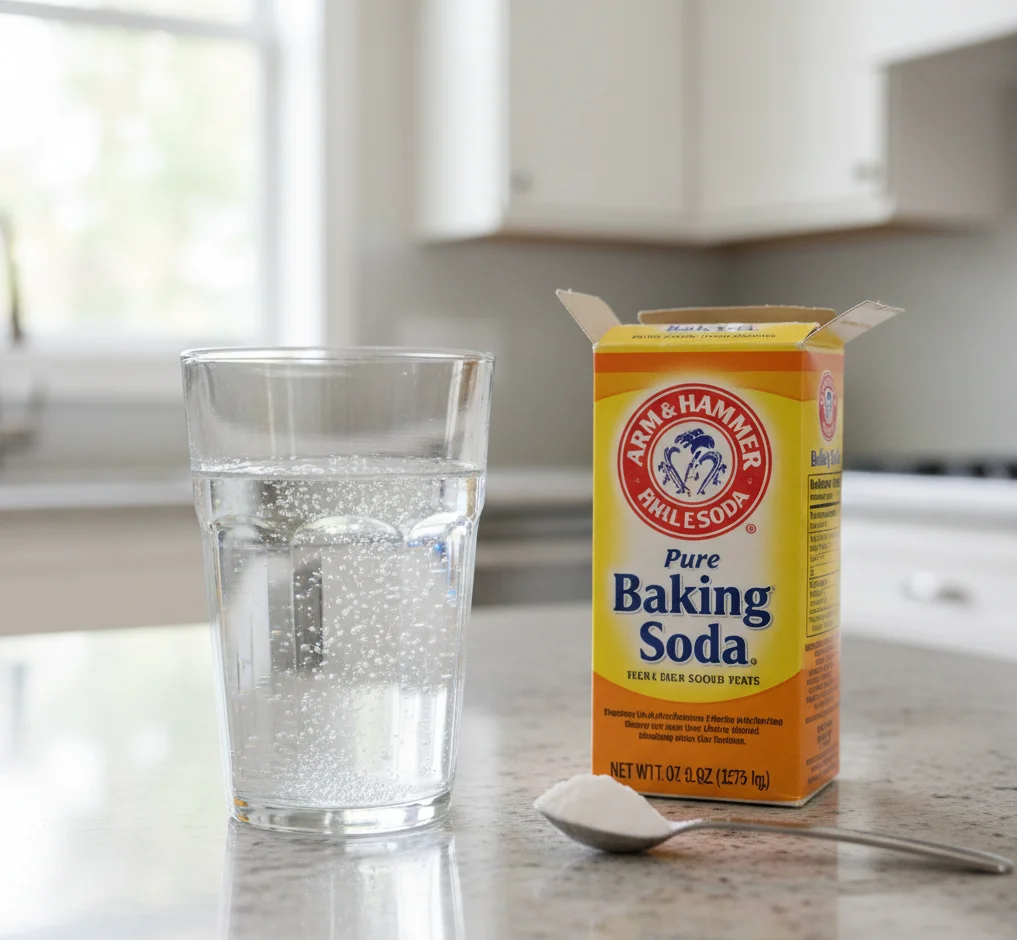Sodium Bicarbonate: Boosting High-Intensity Performance

The secret ingredient for a PR? It might be hiding in your baking soda box. Here's how sodium bicarbonate could help you crush those intervals.
The Claim: Sodium Bicarbonate Improves Performance in High-Intensity Efforts Lasting 30 Seconds to 12 Minutes
During high-intensity exercise, muscles accumulate hydrogen ions, lowering pH and contributing to fatigue. Sodium bicarbonate acts as an extracellular buffer by increasing blood pH, allowing more hydrogen ions to leave muscle cells. The International Society of Sports Nutrition reviewed the evidence and provided dosing guidelines (PMC8427947).
What the Position Stand Reports
Effective Dose
0.3 g/kg body weight taken in a single dose about 60-180 minutes before exercise is effective (PMC8427947). Higher doses (0.4-0.5 g/kg) do not confer additional benefits and increase gastrointestinal distress (PMC8427947).
Example Dose: For a 70 kg (154 lb) athlete, the recommended dose is 21 grams of sodium bicarbonate - roughly 5.3 teaspoons. That's a lot of baking soda, which is why capsule formulations are popular among athletes.
Timing Strategy
Taking sodium bicarbonate with a carbohydrate-rich meal or splitting it into multiple smaller doses (e.g., 0.2 g/kg two hours before, 0.1 g/kg one hour before) can reduce side effects (PMC8427947).
Side Effects
Bloating, nausea, vomiting and diarrhea are common. Enteric-coated capsules may help. Start with small doses to assess tolerance. Never try a full dose for the first time on race day.
Potential Synergy
Combining sodium bicarbonate with creatine or beta-alanine may have additive performance effects, though research is preliminary (PMC8427947).
| Factor | Recommendation | Rationale |
|---|---|---|
| Dose | 0.3 g/kg body weight | Sweet spot for benefits vs. side effects |
| Timing | 60-180 min pre-exercise | Allows peak blood bicarbonate levels |
| Form | Enteric-coated capsules | Reduces GI distress |
| Co-ingestion | With carbohydrate meal | Further reduces stomach upset |
| Split dosing | Multiple smaller doses | Better tolerance, similar efficacy |
Who Benefits
Sodium bicarbonate supplementation is most effective for specific types of exercise and athletes:
Athletes Performing Repeated High-Intensity Efforts
- Sprinters: 200m, 400m, and 800m runners benefit from enhanced lactate buffering
- Rowers: 2000m races fall into the ideal duration window (5-8 minutes)
- Swimmers: 100m and 200m events see consistent improvements
- Track cyclists: Pursuit and sprint events in the 1-12 minute range
Team Sport Athletes
Team-sport athletes needing repeated sprints throughout a match - soccer, basketball, hockey, rugby players - may benefit from maintained high-intensity capacity late in games.
CrossFit and HIIT Athletes
Workouts featuring repeated high-intensity intervals with short rest periods are ideal scenarios for bicarbonate buffering.
How It Works: The Science of Buffering
During intense exercise, your muscles break down glucose rapidly through anaerobic glycolysis. This produces lactate and hydrogen ions (H+). The accumulation of H+ lowers muscle pH, which:
- Inhibits key glycolytic enzymes, reducing energy production
- Interferes with muscle contraction at the cellular level
- Contributes to the burning sensation and fatigue
Sodium bicarbonate increases blood pH and bicarbonate concentration. This enhances the pH gradient between muscle and blood, allowing more H+ ions to leave the muscle cells. With less intramuscular acidosis, you can maintain high-intensity work longer.
The Mechanism: Think of sodium bicarbonate as creating a larger buffer reservoir in your bloodstream. When your muscles generate acid during intense effort, that acid can flow into the blood more readily. Your blood's enhanced buffering capacity neutralizes the acid, preventing it from accumulating in the muscle and delaying fatigue.
Practical Recommendations
1. Trial During Training
Don't first test sodium bicarbonate on race day. Practice to gauge tolerance. Start with half doses (0.15 g/kg) during a training session at least 2-3 weeks before competition.
2. Hydrate and Buffer Meals
A high-carb meal can help offset stomach upset. Good pre-dose meals include:
- Oatmeal with banana and honey
- White rice with lean protein
- Toast with jam and a sports drink
- Rice cakes with peanut butter
3. Consider Body Mass
At 0.3 g/kg, dosing examples:
- 60 kg athlete: 18 g (4.5 teaspoons)
- 70 kg athlete: 21 g (5.3 teaspoons)
- 80 kg athlete: 24 g (6 teaspoons)
That's a lot of baking soda - capsules or flavored formulations may ease ingestion.
4. Split-Dose Protocol
To minimize GI issues, try this approach:
- 3 hours before: 0.1 g/kg with breakfast
- 2 hours before: 0.1 g/kg with snack
- 1 hour before: 0.1 g/kg with sports drink
5. Use Commercial Products
While household baking soda works, commercial sport formulations offer advantages:
- Enteric coating reduces stomach distress
- Pre-measured capsules ensure accurate dosing
- Some include taste-masking or additional buffers
- Third-party testing ensures purity for drug-tested athletes
What About Beta-Alanine?
Beta-alanine is another popular buffer supplement that increases intramuscular carnosine. While sodium bicarbonate buffers extracellularly (in blood), beta-alanine buffers intracellularly (inside muscle). Some research suggests combining both may provide additive benefits, though more studies are needed.
Limitations and Considerations
- Individual response varies: Some athletes are "responders" with clear benefits, others see minimal gains
- GI tolerance: Up to 50% of athletes experience significant stomach distress
- Not for endurance: Little benefit for efforts longer than 12-15 minutes where aerobic metabolism dominates
- Taste: Straight baking soda mixed with water tastes terrible - plan accordingly
The Bottom Line: Sodium bicarbonate is one of the few legal, evidence-backed ergogenic aids for high-intensity performance. If your sport involves repeated efforts in the 30-second to 12-minute range, and you can tolerate the GI effects, it's worth testing. Start conservatively, practice your protocol during training, and use split dosing or enteric-coated capsules to minimize side effects.